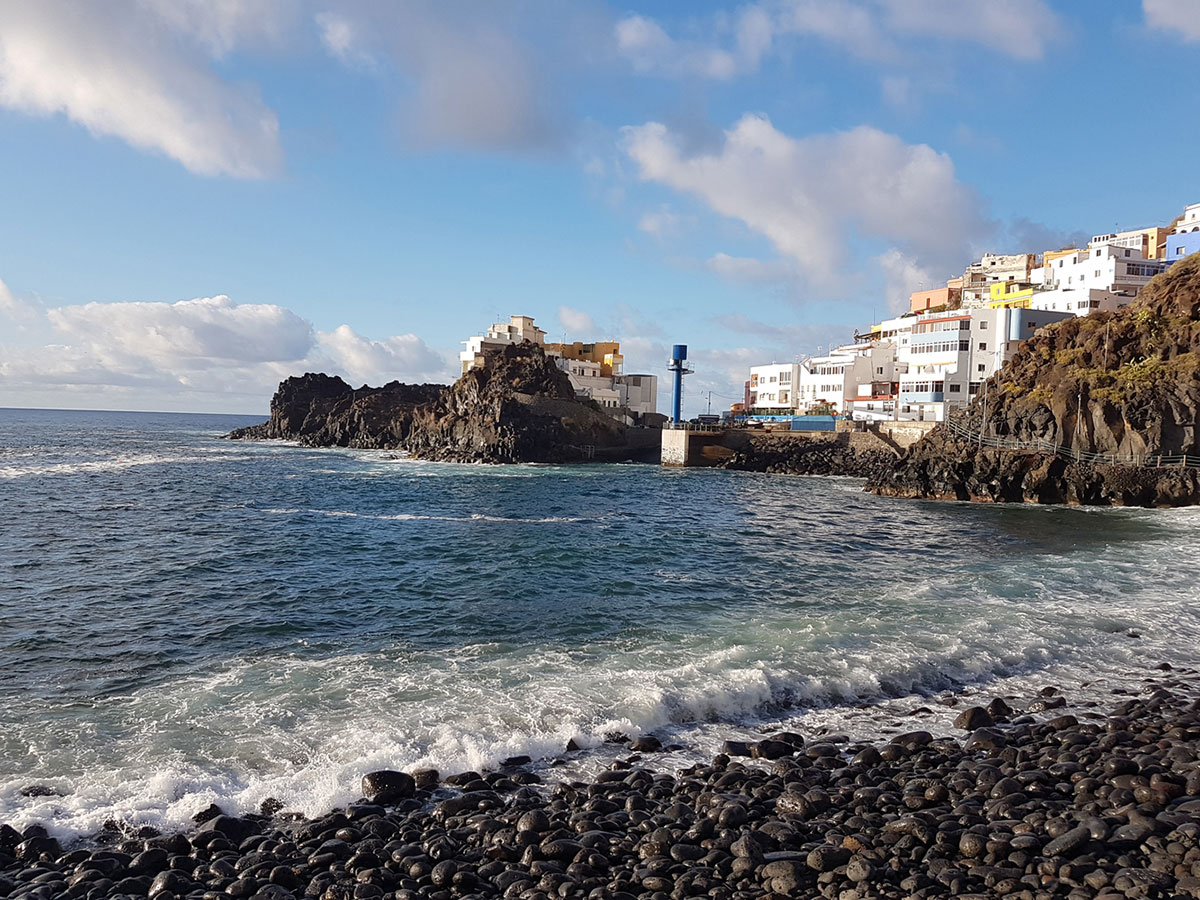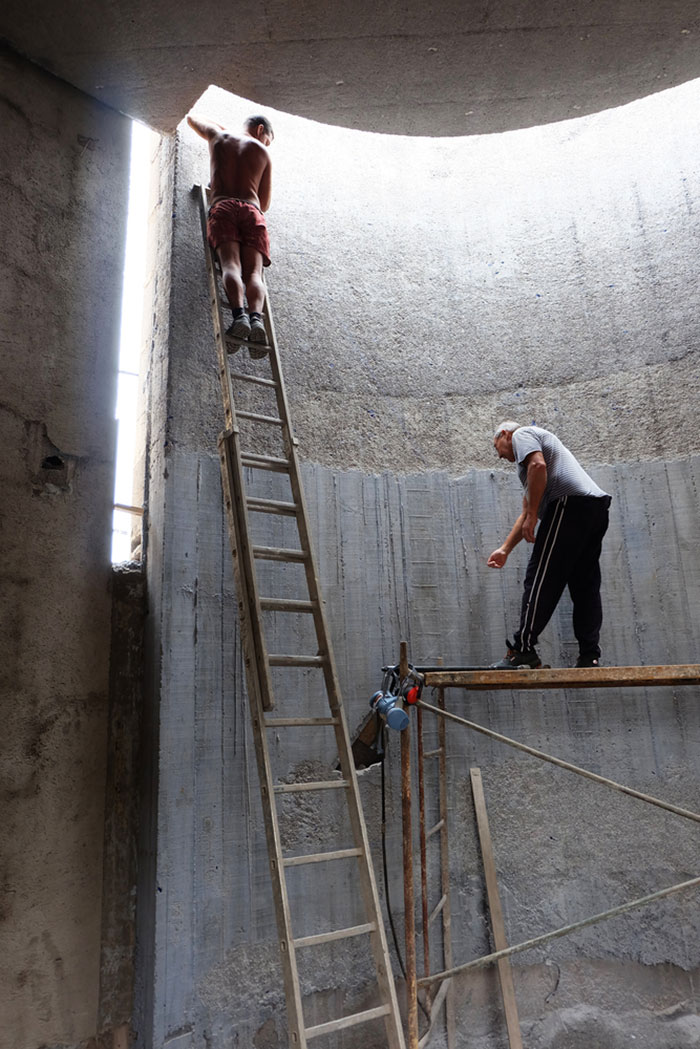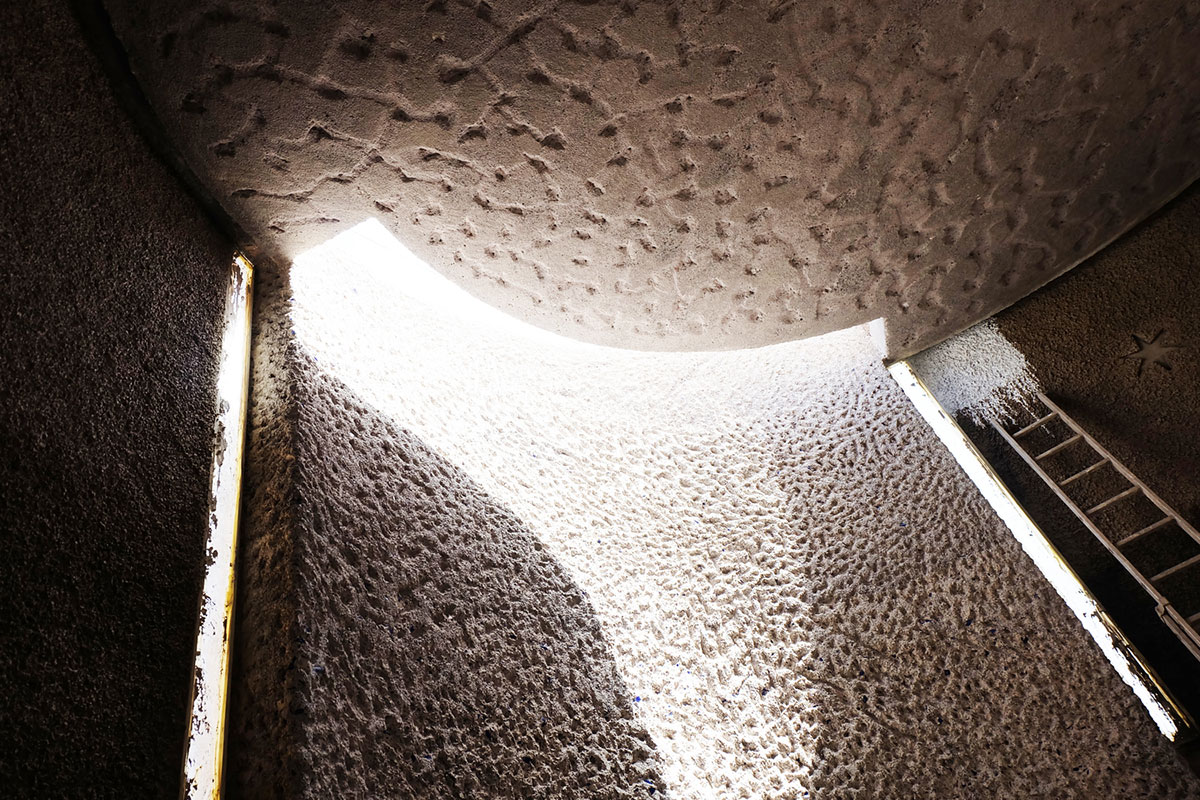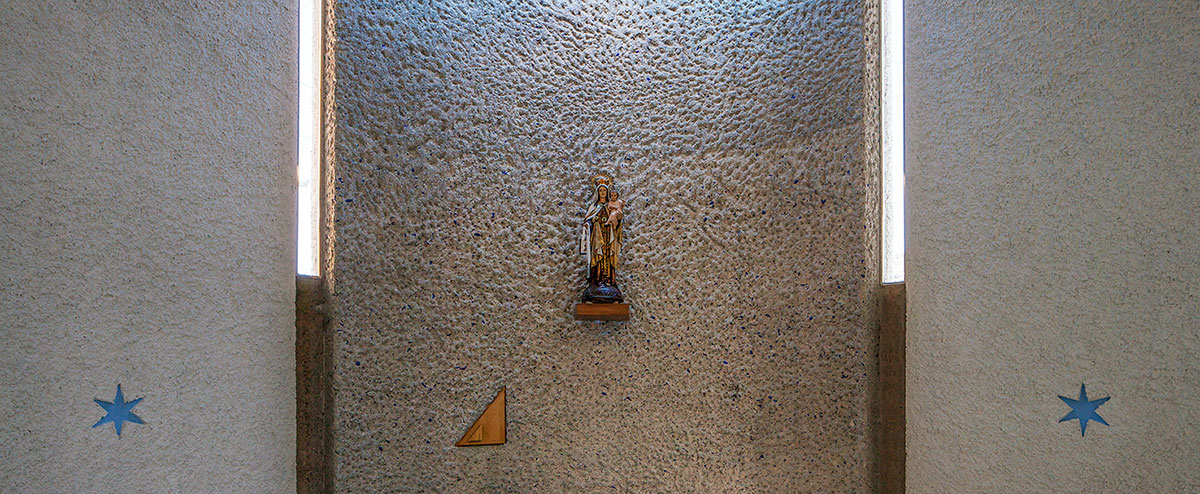In an area without architectural references, where dominate self-build constructions, the planned building aims to complete the façade of the houses erected on the headland. The challenge was to integrate the new volume without imposing it, so that the group of houses constituting the background of the chapel did not lose its character.
The chapel is designed as a single cylindrical volume, diagonally cut in its upper part. In this way, the interior space rises in height, as we approach the altar. Adjacent to the chapel was designed a small prayer space which resemble a cave for the fishermen of the area, as well as a sacristy. The arrangement of the volumes creates open space between both constructions which forms an access patio, protected from the strong winds. The altar is oriented to the north. The altar table is located on the same level as the space of the nave. A single monolithic bank, which comes from the wall, provides the seats for prayers around the altar table. In the continuity of the wall is incorporated the Via Crucis (Stations of the Cross) which is composed of 14 stars. On the concrete altarpiece, there is an entrance of zenith light, which passing through a blue glass creates the ambient of the space. The circumference that forms the floor plan of the temple, represents the femininity of the Virgin Mary, the maternal figure who embraces the faithful. Thus, the Virgin del Carmen presides the space, being located in the north like metaphor of its function of guide to the sailors during the night. The Stella Maris or Star of the Sea.
Architects: Alejandro Beautell / Photographs: José Oller, Alejandro Beautell, Efraín Pintos, Flavio Dorta














